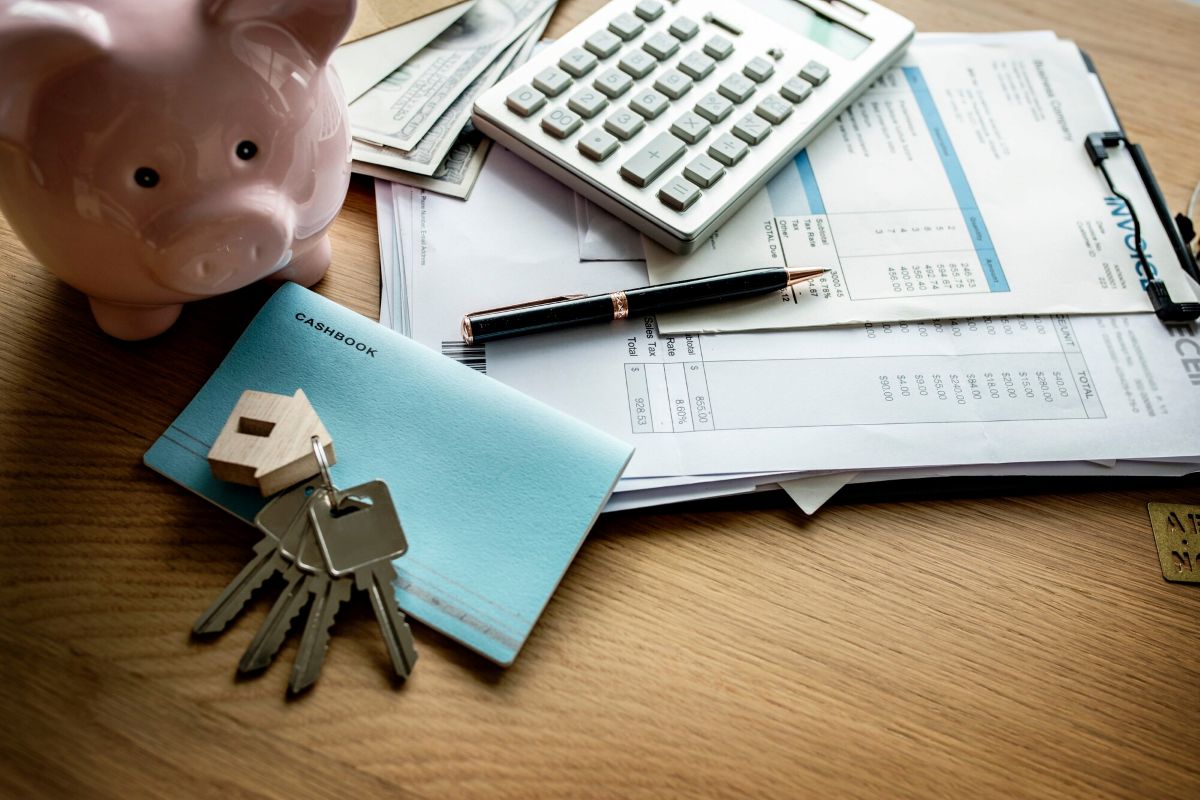Why Avoiding Errors in Depreciation Calculations Is Crucial for Accurate Company Reporting

Depreciation refers to the allocation of an asset's cost over its useful life. This key financial concept plays a significant role in various aspects of a company’s operations, including the accuracy of financial reporting and effective asset management. In what follows, we explore why meticulous depreciation calculations are essential.
1. Accurate Reflection of Asset Value
Depreciation reflects the gradual wear and tear of assets over time. Proper calculations provide a dependable estimate of an asset's current book value, which is critical for:
Making informed decisions on whether to replace, repair, or sell assets.
Effectively planning and forecasting future investments in fixed assets.
2. Impact on Company Profit
Depreciation is recorded as an expense that reduces taxable profit. Errors in its calculation can have significant consequences, including:
Overstating or understating profit, which can distort the company's true financial position.
Misinterpreting business performance, leading to inaccurate conclusions about the company's financial health.
3. Compliance with Legal Requirements
In Indonesia, businesses must adhere to two prescribed depreciation methods: the straight-line method and the declining balance method, as outlined in Law No. 36 of 2008. Non-compliance with these regulations can result in:
Fines
Tax reassessments
Additional costs for the company
4. Accuracy of Tax Calculations
Depreciation expenses reduce the taxable base, and accurate calculations are essential for proper tax reporting. Incorrect calculations can lead to:
Tax underpayments or overpayments
Financial risks that may jeopardize the business's stability
5. Transparency of Financial Reporting
Investors and creditors assess a company’s financial health through its financial statements. Errors in depreciation can:
Erode trust in the company’s financial integrity
Deter potential partners and investors from engaging with the business
6. Decision-Making in Management
Financial reports are crucial for strategic decision-making. Incorrect depreciation calculations can:
Distort asset profitability data
Influence investment and management decisions
Example of an error:
If an asset’s value is understated, depreciation will be lower than it should be, resulting in:
Overstated profits
Incorrect tax calculations
Potential future losses
Depreciation in Company Reports
Depreciation calculations are conducted throughout the year and reflected in the annual financial statements. This process enables the company to:
Manage resources more efficiently
Meet obligations to investors and government authorities
Best Practices for Error-Free Depreciation
To ensure accurate depreciation calculations, it is essential to:
Use up-to-date data on the asset's cost and useful life
Use professional services to prepare your financial reports
Below, you will find tables outlining depreciation categories and the recommended useful life periods for specific assets.
The asset groups in the table represent categories of intangible and fixed assets, each with a distinct useful life. This classification is essential for determining the correct depreciation (write-off) rate, both for accounting and tax purposes.
Group 1 (4 years)
№ | Type of Activity | Type of Asset |
|---|---|---|
1 | All types of activities | a. Furniture and equipment made of wood or rattan, including tables, chairs, cabinets, etc., excluding buildings. b. Office equipment: typewriters, calculators, duplicators, copiers, accounting machines, laptops, computers, printers, scanners, and similar electronic devices. c. Other accessories, such as amplifiers, cassette players, VCRs, televisions, and other electronic devices. d. Motorcycles, bicycles, and rickshaws. e. Specialized tools for a specific industry/service. f. Equipment for food and beverage preparation. g. Fixtures, templates, and molds. h. Communication devices: phones, fax machines, mobile phones, and similar equipment. |
2 | Agriculture, Horticulture, Forestry, Livestock, Fishing | Equipment without engines: shovels, rakes, etc. |
3 | Food Industry | Portable equipment: hullers, crushers, grinders, pallets, and similar items. |
4 | Transportation and Warehousing | Taxis, buses, and trucks used for public transportation. |
5 | Semiconductor Industry | Flash memory testers, writing machines, bipolar test systems, PE8-1 equipment, and Pose Checker. |
6 | Rental and Mooring Equipment for Water Transport | Anchors, anchor chains, polyester ropes, buoys, steel cables, and mooring equipment. |
7 | Cellular Communication Services | Base station controllers. |
Group 2 (8 years)
№ | Type of Activity | Type of Asset |
|---|---|---|
1 | All types of activities | a. Furniture and equipment made of metal: tables, chairs, cabinets, etc., not part of buildings. Air devices such as air conditioners and fans. b. Passenger cars, buses, trucks, speed boats, etc. c. Containers and similar equipment. |
2 | Agriculture, Horticulture, Livestock, Fishing | a. Agricultural machinery: tractors, plows, planters, seeders, fertilizer spreaders, etc. b. Equipment for processing or producing agricultural and fishery products. |
3 | Food Industry | a. Equipment for processing livestock, poultry, and fish products, e.g., fish processing equipment. b. Equipment for processing plant products: coconut oil production machines, margarine, coffee grinders, grain, rice, wheat grinding machines, etc. c. Equipment for producing beverages and beverage raw materials. d. Equipment for producing food products, e.g., machines for making noodles and bread. |
4 | Tobacco Industry | Equipment for processing and producing tobacco products (machines for cutting tobacco, cigarette rolling, etc.). |
5 | Mechanical Engineering | Equipment for producing machinery and metal products (e.g., sewing machines, pumps, etc.). |
6 | Forestry and Woodworking Industry | a. Equipment for processing and manufacturing wood. b. Equipment for processing or producing forestry products. |
7 | Construction | Construction machinery and equipment: concrete mixers, dump trucks, bulldozers, etc. |
8 | Transport and Logistics | a. Cargo trucks, cranes, tractors, and other equipment for loading and transportation. b. Passenger ships, barges, and specialized cargo ships (e.g., for grain, stone, minerals, including refrigerated ships). c. Tanker ships and fishing vessels up to 100 DWT. d. Specialized ships for towing large vessels or firefighting purposes, floating cranes, and vessels up to 250 DWT. e. Sailing boats and non-motorized boats up to 250 DWT. |
9 | Telecommunications | a. Telephone communication equipment. b. Telegraph and radio signal transmission equipment. |
10 | Semiconductor Industry | Automatic frame loaders, testing machines, coating systems, drying ovens, presses, machines, memory check systems, assembly lines, and other equipment. |
11 | Rental of Water Equipment | Mooring equipment: cable winding machines, meteorological stations, and other accessories. |
12 | Mobile Telecommunication Services | Mobile communication equipment: switches, registers, authentication centers, network service controllers, terminals, and antennas. |
Group 3 (16 years)
№ | Type of Activity | Type of Asset |
|---|---|---|
1 | Mining (excluding oil and gas) | Machines used in mining, including equipment for processing extracted materials. |
2 | Spinning, Weaving, and Dyeing Fabrics | a. Equipment for producing textile products, such as cotton, silk, synthetic fibers, wool, linen, carpets, etc. b. Machines for preparation, bleaching, dyeing, printing, finishing, texturing, and packaging. |
3 | Wood Processing | a. Equipment for processing wood and other plant materials (straw, grass, and woven items). b. Machines and equipment for transporting wood. |
4 | Chemical Industry | a. Equipment for processing chemical industry products, including: chemicals (organic and inorganic), elements, fertilizers, cosmetics, soap, detergents, explosives, and pyrotechnics. b. Equipment for producing other industrial products, such as synthetic materials, artificial leather, and rubber. |
5 | Mechanical Engineering | Equipment for producing medium and heavy machinery (e.g., vehicles and ships). |
6 | Transport and Logistics | a. Passenger ships, cargo ships, and specialized vessels for transporting specific goods (e.g., grain, minerals, and fish) weighing from 100 to 1,000 DWT. b. Specialized ships for towing other vessels, firefighting ships, dredgers, and floating cranes weighing over 1,000 DWT. c. Floating docks. d. Sailing and motorized boats weighing up to 250 DWT. e. Airplanes and helicopters of all types. |
7 | Telecommunications | Radio navigation equipment, radars, and remote control devices. |
Group 4 (20 years)
№ | Type of Activity | Type of Asset |
|---|---|---|
1 | Construction | Heavy construction equipment and machinery. |
2 | Transport and Logistics | a. Steam locomotives and tenders for railway transport. b. Electric locomotives powered by batteries or external electricity. c. Other types of railway locomotives. d. Passenger and freight cars, including specialized containers and wagons equipped for multi-modal transport. e. Passenger ships, cargo ships, and specialized vessels for transporting specific goods (e.g., grain, ore, fish), including refrigerated and tanker ships, weighing more than 1,000 DWT. f. Specialized ships for towing, firefighting, dredgers, and floating cranes weighing over 1,000 DWT. g. Floating docks. |
Remember: proper depreciation is not only compliance with legal requirements, but also a tool for effective business management. If you still have any questions, please contact our specialists for qualified assistance.















